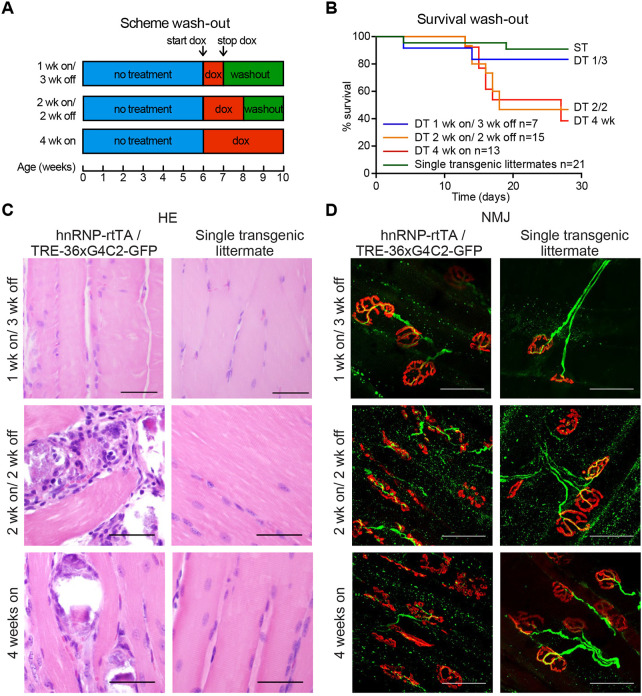Fig. 4.
Early dox withdrawal can prevent but not reverse the muscular dystrophy and NMJ phenotype of TRE-36×G4C2-GFP/hnRNP-rtTA DT mice. (A) Schematic of different washout groups. (B) Survival curve for the washout experiment. Mice that received 1 week dox followed by 3 weeks washout (1 week on/ 3 weeks off, n=7) showed high survival. Two weeks dox followed by 2 weeks washout (2 weeks on/ 2 weeks off, n=15) showed the same reduction in survival as 4 weeks continuous dox administration (4 weeks on, n=13). ST littermates [containing only one transgene (either TRE only or rtTA only)] were distributed over the groups and received the same dox treatment (n=21). (C) H&E staining of the EDL muscle remained normal in the 1 week on/ 3 weeks off group but showed distortion in TRE-36×G4C2-GFP/hnRNP-rtTA DT mice that received 2 weeks dox followed by 2 weeks of normal drinking water. (D) NMJ of the EDL muscle showed collapsed boutons (red, α-bungarotoxin) and axonal projections (green, neurofilament antibody) in DT groups that received 2 or more weeks of dox. All stainings were performed on all mice in this study. Numbers per group were: ST, 1 week dox, n=7; DT, 1 week dox, n=8; ST, 1 week on/3 weeks off, n=4; DT, 1 week on/3 weeks off, n=7; ST, 2 weeks dox, n=6; DT, 2 weeks dox, n=8; ST, 2 weeks on/2 weeks off, n=6; DT, 2 weeks on/2 weeks off, n=5; ST, 4 weeks dox, n=15; DT, 4 weeks dox, n=16. Scale bars: 50 µm.

